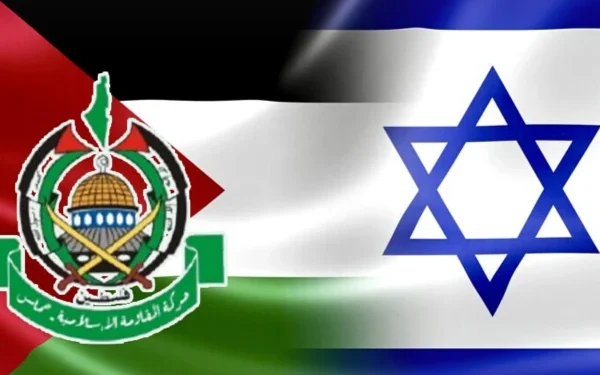Introduction: Rising Tensions Amidst Stalled Ceasefire Talks
In a bold and ominous statement, Israel has issued a stern warning to the Palestinian resistance group Hamas, declaring that the organization must either accept a recently proposed ceasefire agreement or face total destruction. The proposal in question, drafted with significant involvement from the United States, aims to end months of bloody conflict in Gaza, secure the release of Israeli hostages, and allow humanitarian aid into the besieged territory.
The Israeli government has shown its willingness to move forward by signing the proposed deal. However, Hamas has so far withheld formal approval, citing major concerns regarding the terms of the agreement—particularly its failure to guarantee a permanent end to the war and address key Palestinian demands.
Israel’s Harsh Warning to Hamas
Defense Minister’s Statement: “Accept or Be Destroyed”
Speaking to local and international media, Israeli Defense Minister Yoav Gallant made Israel’s position crystal clear. “Hamas must accept the ceasefire agreement proposed by U.S. envoy Steve Wittkoff, otherwise it will be doomed,” he declared. Gallant went on to say, “The decision is now in Hamas’s hands—either accept the deal or be prepared for complete destruction.”
This statement marks one of the strongest public ultimatums issued by Israeli leadership in recent months and underscores Israel’s hardened stance as diplomatic efforts falter.
Background of the US-Backed Ceasefire Proposal
Terms of the Agreement
According to Arab and international media outlets, the US-brokered ceasefire deal contains several key components aimed at de-escalating the ongoing Israel-Hamas war in Gaza. The agreement includes:
- A 60-day ceasefire, during which hostilities would temporarily halt.
- The release of 10 Israeli hostages held by Hamas.
- The release of Palestinian prisoners in Israeli custody, to be carried out in two stages.
- Unconditional humanitarian aid to be allowed into Gaza.
- A phased withdrawal of Israeli military forces from the territory.
These terms have been shaped to balance both humanitarian concerns and the political interests of both parties. However, critics argue the agreement is tilted in favor of Israel, particularly because it fails to guarantee a permanent ceasefire or address deeper political and territorial issues.
Hamas Responds with Skepticism
Senior Leader Rejects Key Terms
While Israel has agreed to the proposal, Hamas remains unconvinced. In an interview with the BBC, a senior Hamas leader stated that the organization is not inclined to accept the agreement in its current form.
“The American agreement neither guarantees an end to the war, nor meets Hamas’s basic demands, so we cannot accept it,” he said.
Hamas is expected to issue an official response in the coming days. Sources close to the group have suggested that while Hamas remains open to negotiations, any proposal that does not ensure long-term security for Palestinians or address the broader Israeli occupation will likely be rejected.
US President Donald Trump Expresses Optimism
Hope for a Breakthrough
Despite the current impasse, U.S. President Donald Trump has voiced cautious optimism about the possibility of a breakthrough. Speaking to journalists, Trump stated:
“We will give you good news about it today or tomorrow.”
His statement has added a glimmer of hope to the otherwise bleak diplomatic landscape. The United States, which has played an active mediating role throughout the conflict, sees the current proposal as the most viable path forward in the short term.
US Diplomatic Efforts
The current proposal was negotiated under the supervision of U.S. envoy Steve Wittkoff, who has been shuttling between Tel Aviv, Cairo, and Doha in a bid to bring both parties to the table. While U.S. influence over Israel remains substantial, bringing Hamas into agreement has proven to be far more complex due to deep-seated mistrust and unresolved issues.
Humanitarian Crisis Deepens in Gaza
Israel’s Renewed Offensive and Ceasefire Violations
The ceasefire deal comes in the wake of renewed Israeli military operations in Gaza. On March 18, 2025, Israel resumed bombing campaigns across various parts of Gaza, violating previous ceasefire understandings.
According to humanitarian agencies and eyewitness reports, the bombardments have led to the destruction of homes, schools, and medical facilities. These developments have not only worsened the physical damage but have also made the negotiation environment more hostile.
UN Warns of Imminent Famine
The United Nations has raised alarm bells, warning that the entire population of Gaza is facing imminent famine. According to recent UN reports:
- More than 2 million people in Gaza lack access to clean water, food, and medical care.
- Basic infrastructure—electricity, water supply, and hospitals—has been virtually destroyed.
- A full-scale humanitarian collapse is feared unless immediate aid is allowed through.
Casualties and Devastation: A Bleak Reality
Since the beginning of the current war on October 7, 2023, the human cost has been staggering:
- Over 54,000 Palestinians have been killed in Israeli airstrikes and ground operations.
- More than 100,000 people have been injured, many of whom face lifelong disabilities.
- Entire neighborhoods and cities have been flattened, with no functioning infrastructure left in many areas.
- Israeli casualties, though significantly lower, have also been reported, especially during the initial Hamas-led incursions and rocket attacks.
The scale of the tragedy has drawn condemnation from international human rights organizations and has sparked worldwide protests demanding an end to the violence.
Global Reactions and Diplomatic Pressure
Arab World and International Community
Many Arab nations, including Qatar, Egypt, and Jordan, have called for an immediate ceasefire and long-term political solution to the conflict. The European Union, United Nations, and several humanitarian organizations have also backed the U.S. proposal, urging both parties to consider the human cost of further delay.
Domestic Pressure on Israel and Hamas
Internally, both Israeli and Palestinian societies are grappling with the emotional and psychological toll of the conflict. Families of hostages in Israel have been staging protests, urging the government to secure their loved ones’ release at any cost. In Gaza, civilians continue to suffer under constant threat, hunger, and displacement, pressuring Hamas to prioritize humanitarian relief.
Conclusion: A Moment of Reckoning for Peace or Destruction
The latest ultimatum from Israel represents a critical turning point in the ongoing conflict. With one side signaling a readiness to escalate militarily and the other refusing to accept what it views as a flawed and inadequate peace offer, the path forward remains dangerously uncertain.
As diplomatic channels work against the clock, the fate of thousands hangs in the balance. The coming days will be pivotal—not just for Israel and Hamas—but for the stability of the Middle East and the lives of millions of innocent civilians caught in the crossfire.

























